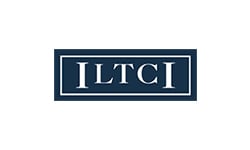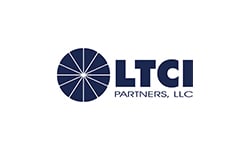Denise Gott, CLTC, is CEO of ACSIA Partners
Long-term care (LTC) insurance products have a long history, good and bad, Denise Gott told attendees of webinar produced by NAIFA’s Limited and Extended Care Planning Center. While there have been challenges in the past, “we are now seeing a lot more rate stabilization, a lot more attention being paid to underwriting,” she said. As a result, many problems highlighted in negative media stories have been fixed. And despite some “bumps in the road,” traditional LTC insurance has paid out billions of dollars in claims to policyholders.
The need for LTC planning has never been greater. LTC expenses “pose the single biggest threat to your clients’ wellbeing,” Gott said. To meet this need, along with LTC insurance, the industry has developed new products, pricing, and availability.
“We’re not really seeing any conversation or any kind of activity around the government addressing long-term care for the country as a whole,” Gott said. Employees are looking to their employers for solutions.
Employer Misconceptions
Many employers believe providing LTC solutions for employees would be too expensive or too complicated. Often, they mistakenly believe their employees have no interest in LTC coverage. They’re also worried about rate increases that plagued LTC insurance group plans in the past.
“Not to worry,” Gott said. “There are options out there and part of the process is to educate the employer on what’s available and that there are products available and we do have solutions for long-term care planning.”
Among the available options are traditional TLC insurance products and worksite hybrids, which feature whole, universal, or term life insurance policies with a LTC rider. Both are individually owned and fully portable. Both may provide comprehensive coverage and gender-neutral rates. Simplified underwriting is also generally available in both cases, and hybrid products may include a guaranteed issue option.
Traditional LTC insurance often offers significant discounts for couples and families that are not available with hybrid products, but many hybrids do offer spouse and child coverage. Health savings account funds can be used to fund traditional LTC insurance. There are a variety of plans , both traditional and hybrid, from different companies that can meet the needs of different employers and workers.
Considerations will include: the ages and incomes of employees and whether group life options are already available.
“The hybrid products generally tend to be attractive to a group that might have a younger demographic, maybe their incomes are between $40,000 and $75,000 on average,” Gott said, “primarily because they have different concerns. Younger people have different issues they’re dealing with – They’re dealing with raising families, they’re saving for retirement, they’re saving up to buy a house.”
Identifying Opportunities
Employers who are good prospects for group LTC solutions share several characteristics. They will have supportive human resources personnel that will help advisors get access to the employees and provide educational materials. Good prospects are likely to already offer workers a robust slate of benefits and have good 401(k) participation rates. It helps if the business is in a stable industry with a stable workforce. “Turnover is really a challenge with traditional and hybrid long-term care products,” Gott said. “It doesn’t mean it can’t be a good case, but it will be a little harder.”
Of course, high levels of employee interest and employee demographics that support the need for LTC solutions is also important. Small, closely held businesses are good candidate for products with executive care-outs. “You’d be surprised at what [resources] they have available and what they’re willing to do to recruit and train key people,” she said.
“So, there are lots of things to consider and there are definitely cases you will want to walk away from,” Gott added. Companies with demographics that don’t fit or human resources personnel who are not supportive generally do not make good prospects.
Keys for Success
It is crucial for agents and advisors with limited experience in LTC solutions to work with an expert in the field who can help them clients and the companies.
It is important to have full employer engagement coming from the top down (not just HR, but also the C-suite) that will allow you the access to educate workers and create awareness. The employer should offer off-cycle enrollment in the LTC plans, and not simply offer them as part of a slate of benefits during open enrollment. In the best clients, you will have an internal champion to help you get the word out among employees.
Be sure that you bring value-added service to the businesses you work with, Gott said.
Gott concluded her presentation with three case studies illustrating solutions that fit three different clients:
- A chain of nursing facilities with 640 total lives
- A pharmaceutical firm with 14,568 total lives
- A health care organization with 23,278 total lives
Gott’s presentation, including the case studies, is available on demand via NAIFA’s Limited and Extended Care Planning Center.
















-CMYK.png?width=250&name=LifeSecureLogo(F)-CMYK.png)






